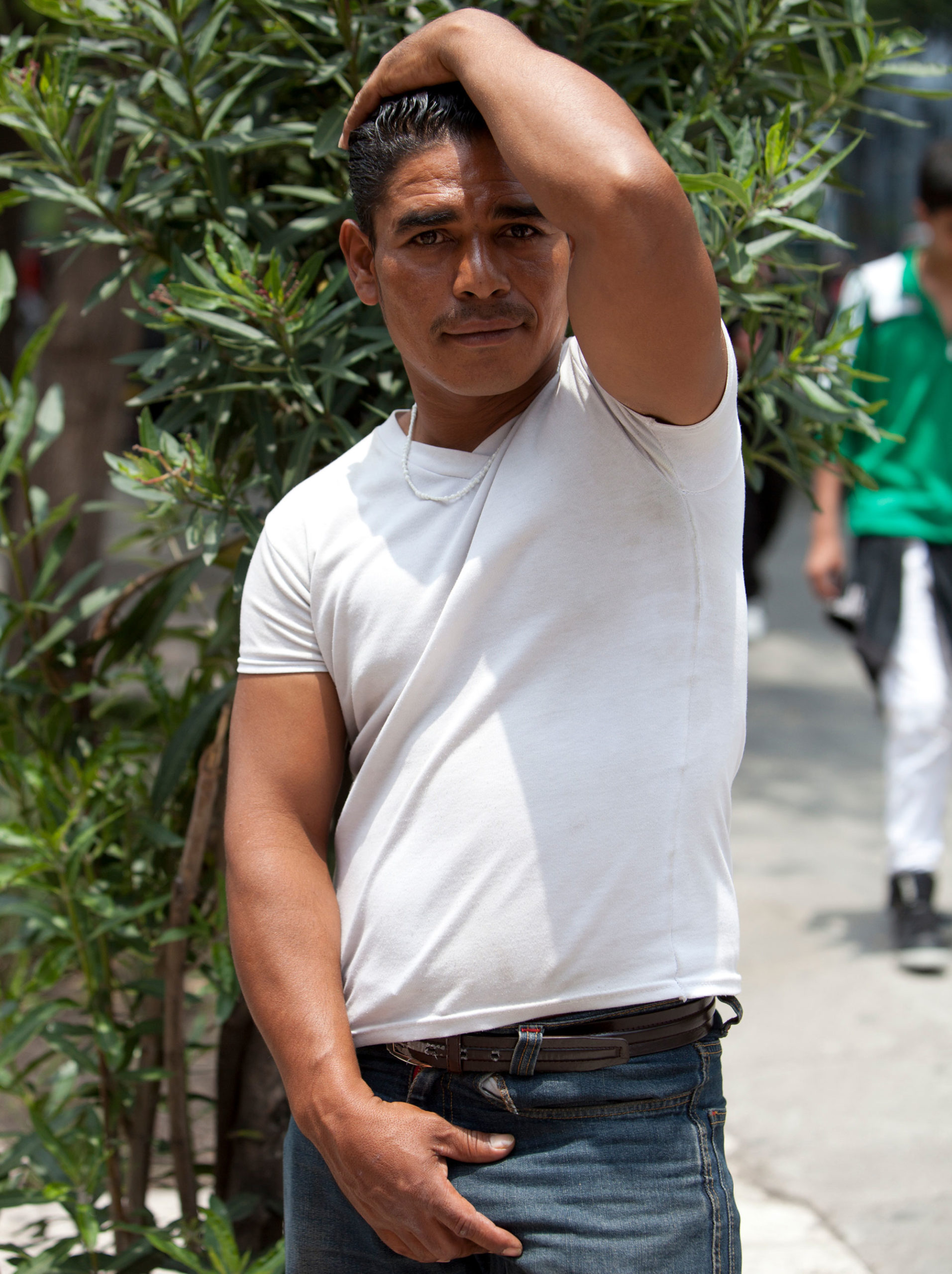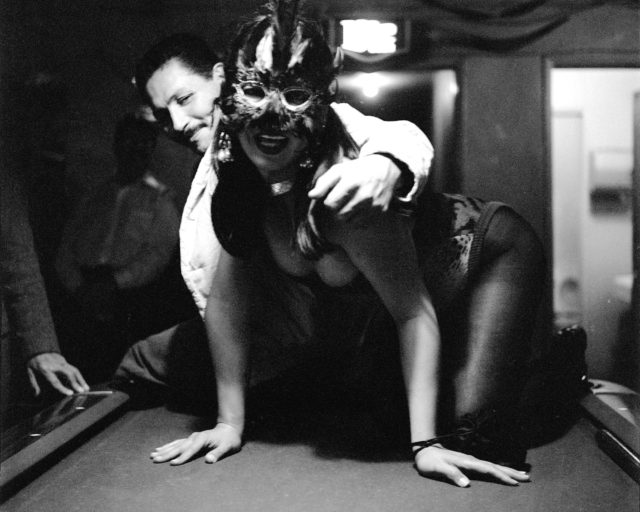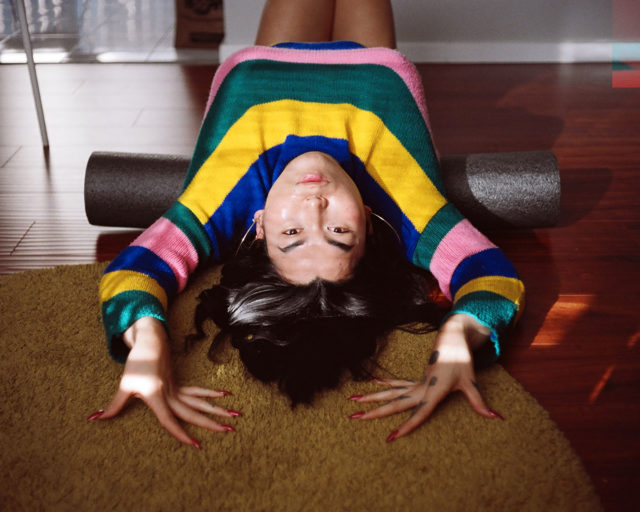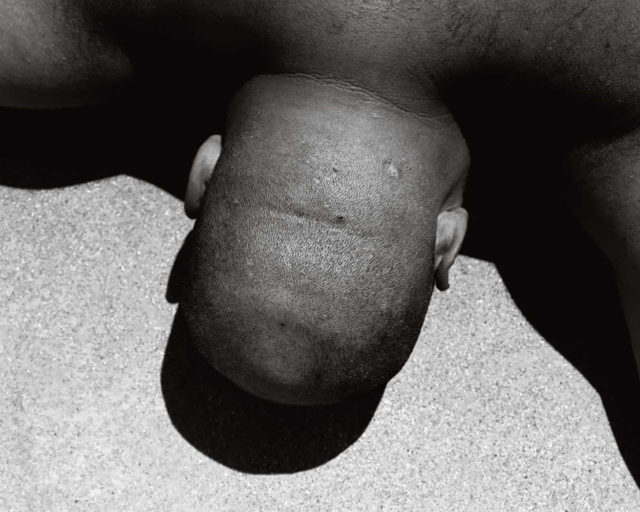Dorian Ulises López Macías, Untitled, Mexico City, 2016, from the series Mexicano
I was eating a shrimp cocktail by the ocean in Oaxaca one November when I spotted a young man rolling around on the beach, covered in sand and striking cat-like poses for a photographer who was egging him on. “That’s @MexicanoMX!” my friend whispered, lowering her sunglasses to get a better look. Sure enough, when I pulled up his Instagram, the photographer’s stories were full of sun-kissed Oaxacan beauties surfing, fishing, and splashing around in the powerful waves of the Pacific. Watching him work, I was struck by his effortless way of making this young man feel empowered enough to strut his sensuality in front of a crowded beachfront restaurant. “I think it has to do with my honesty,” Dorian Ulises López Macías, the photographer behind the account, tells me two years later over Zoom. “I’ve never been afraid to walk up to a man on the street and say, ‘I want to take your photo because I think you’re handsome.’”
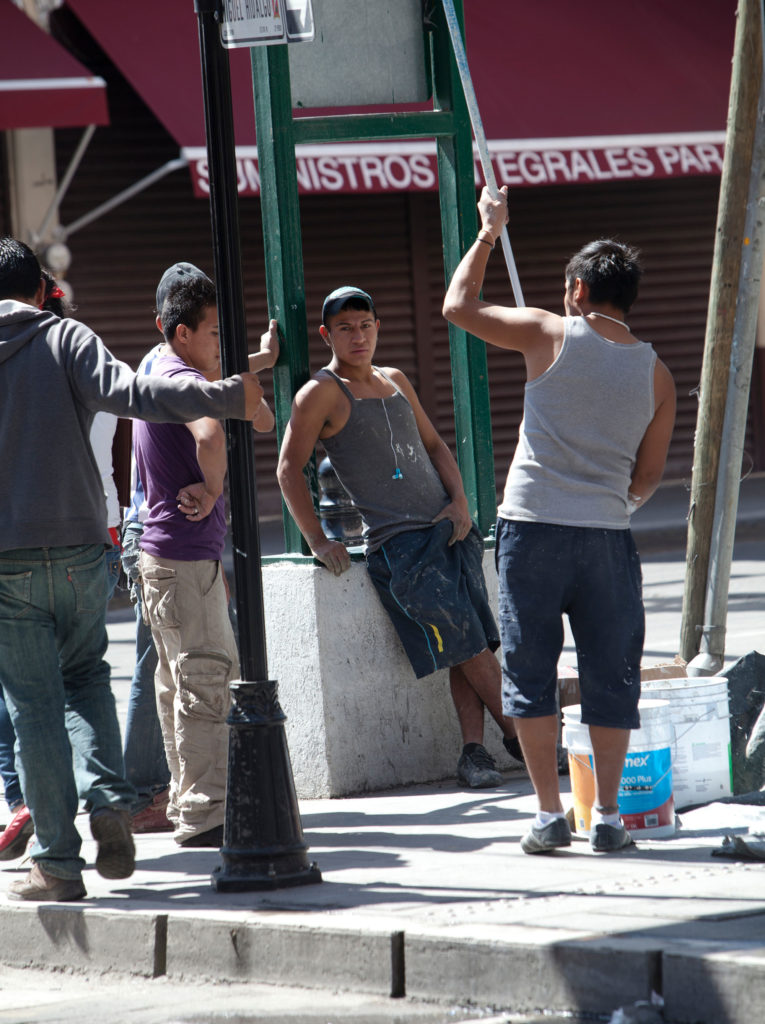
Macías has refined a genre of street portraiture that skillfully balances pinup sex appeal with soul-gazing pathos. Stylistically, you could say his work hearkens back to the documentary tradition of groups like the Photo League, which set out to produce dignified images of the working class. But where the social realists aspired to eliminate artifice in favor of objectivity, Macías encourages his subjects to pose and preen. He’s particularly drawn to facial features, and not just of men he’s attracted to, but any traits that hint at a person’s rich interiority.
This approach reflects the mindset of his day jobs in fashion—first as art director for magazines like ELLE México, now as director of Casting en el Parque, a Mexican modeling agency—which involve a never-ending hunt for interesting faces. But the faces that interest him aren’t the ones that dominate the Mexican fashion industry, with its overwhelming bias toward white and light-skinned models. Instead, what distinguishes Macías is the way he captures the range and vitality of Mexico’s moreno, or dark-skinned, majority.
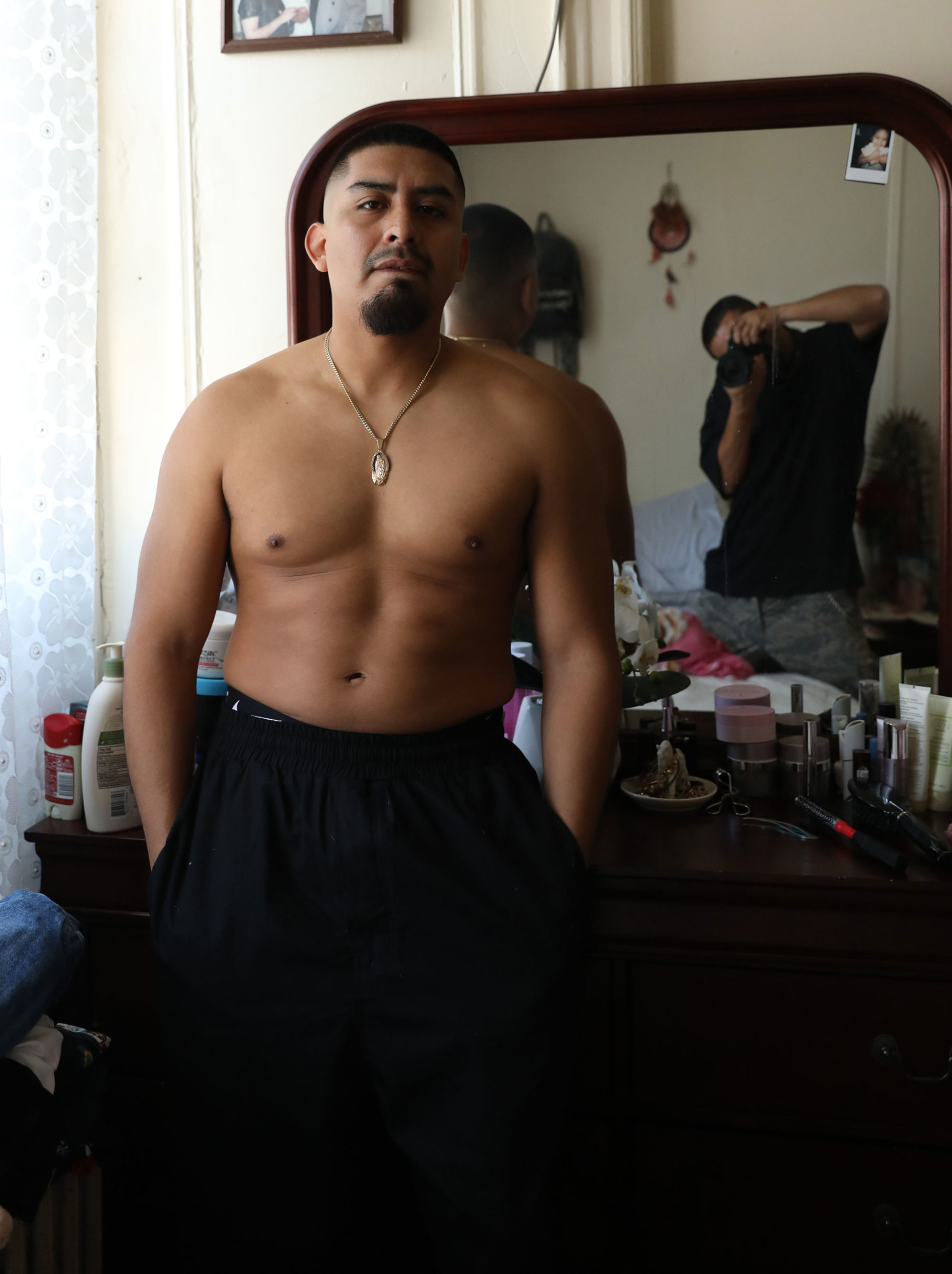
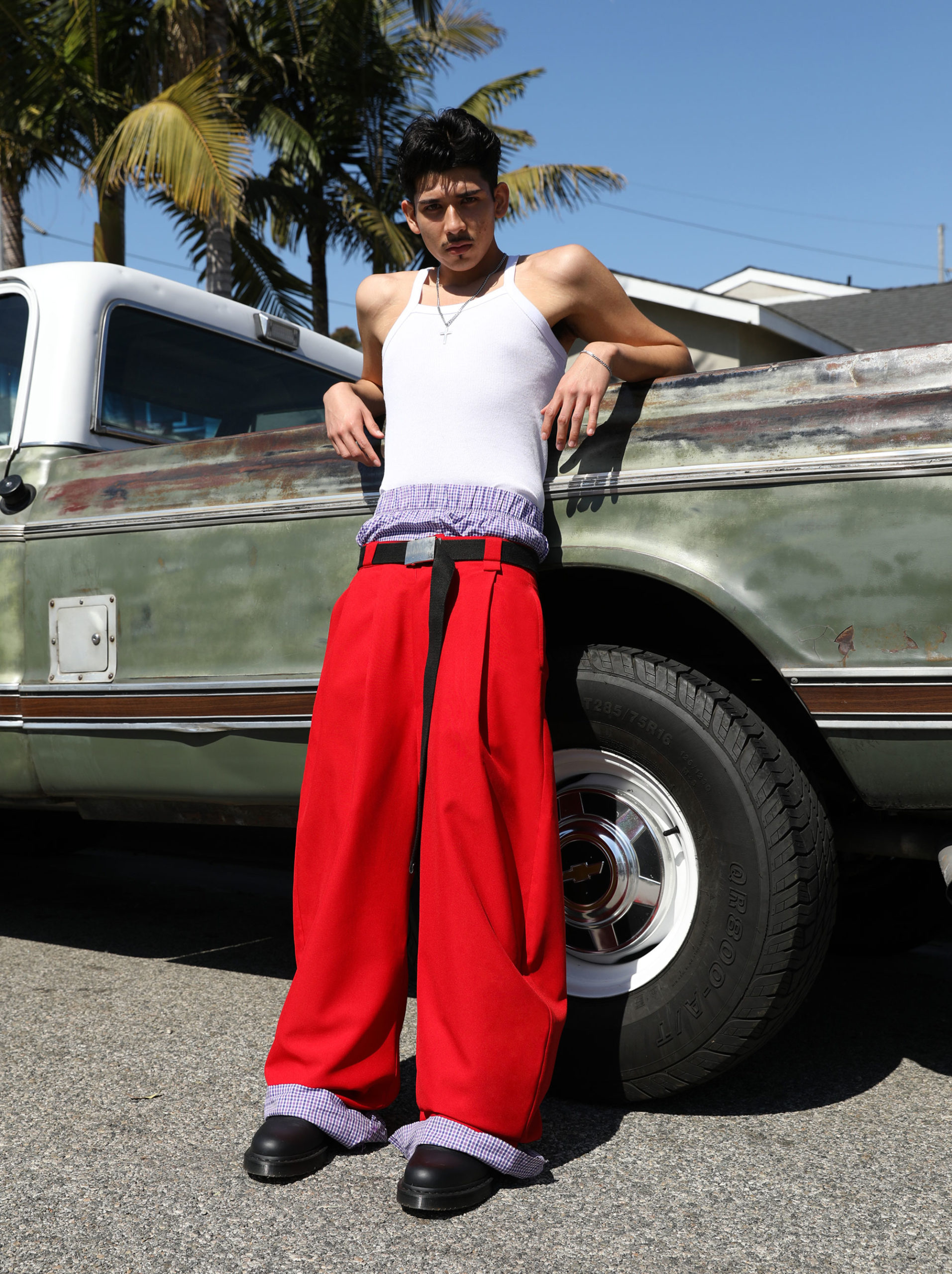
When Macías connects to our video call, he is silhouetted against a wall jam-packed with photos and paper ephemera: some he took, some were gifts from friends, and others he collected over the years. He’s lived in this Mexico City apartment for seventeen years—it was one of the first rooms he rented when he moved from his rural hometown outside the city of Aguascalientes. Photography has been a hobby for him ever since his father (“a junk collector just like me,” he says) gifted him a camera, and when he got hired for his first job in the capital, he began photographing workers on his commute.
“I grew addicted to going out in the street in search of portraits,” Macías tells me. “I’d bring the camera everywhere, even on the bus, and just wait for interesting people to show up. It was such a thrill.” His approach grew out of a magpie impulse to “conserve moments, to conserve people,” and for years he didn’t share the images with anybody but cherished them like treasures in the privacy of his bedroom. He tried not to overthink his process, allowing his instinct (erotic or otherwise) to take over and guide him on long walks through the city. “It’s like when a dog sees another dog and gets excited,” he says. “Obviously I’m a human so I can control myself, but otherwise I’m just like a dog. I’m driven by the instinct to get up close to other humans.”
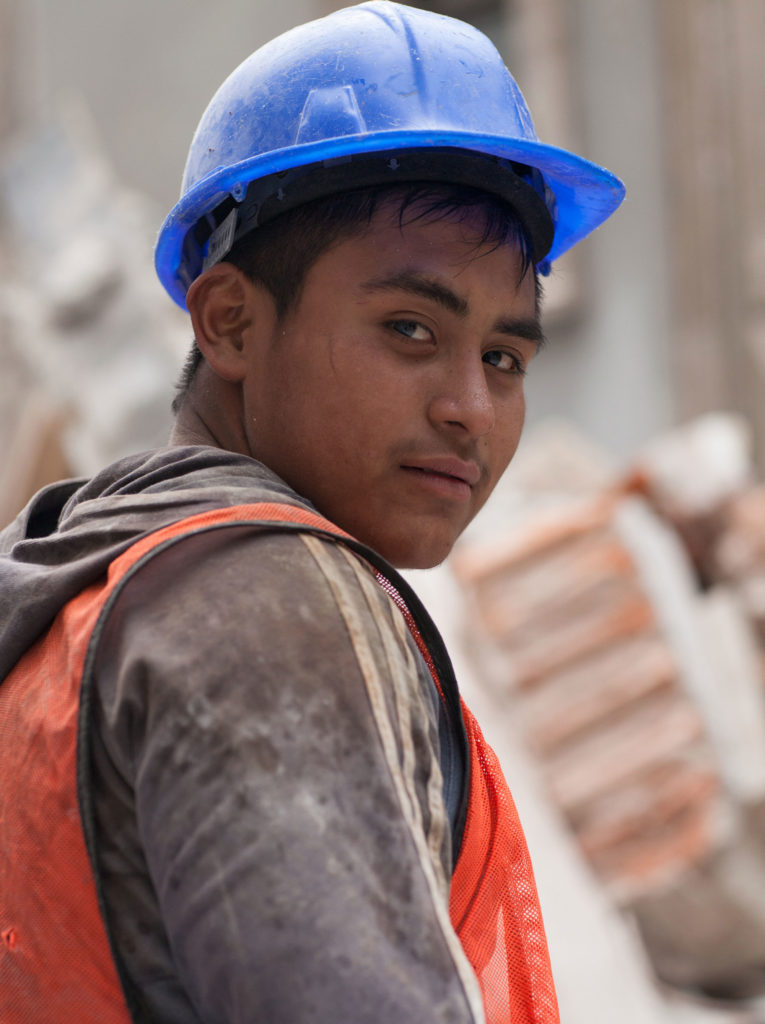

From his first job as a graphic designer at the now-defunct lifestyle and arts magazine Código, Macías steadily rose through the Mexico City media world, landing at ELLE México in 2012. For years he lived what he calls a “double life.” By night, he was the street photographer who glamorized Mexico’s native features, and by day, the art director of fashion magazines full of gaunt Russian models. “What I was doing as a street photographer was attacking what I was doing in the fashion world,” he says.
Eventually, he started insisting that his clients employ, if not dark-skinned models, at least Mexican ones. Most refused. Several magazines and major fashion brands also stopped working with him, and for a few years he had to borrow rent money from his mother. It wasn’t until Chiara Bardelli-Nonino, the photo editor of Vogue Italia, hired him to direct a fashion editorial with Mexican models that his old clients came crawling back.
“All those producers who had turned their back on me, all of the sudden they were interested in me again,” he says. “Like, Wow, Vogue is paying attention to you, and not just any Vogue—Vogue Italia! Even Vogue Mexico was interested again. That’s how things work in Mexico.”

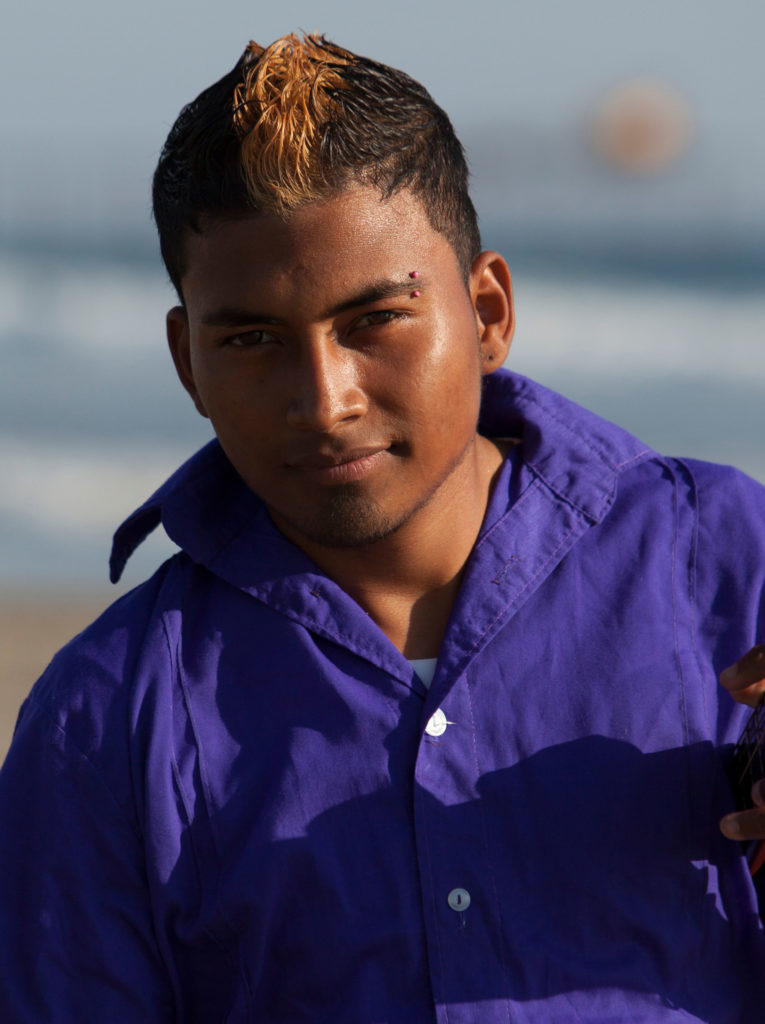

In 2016, Macías began uploading portraits to the Instagram account @MexicanoMX. Three months later, the Los Angeles–based performance artist Rafa Esparza invited him to create work to display in his installation at the 2017 Whitney Biennial, a semicircular wall of adobe bricks Esparza had built out of dung, dirt, and water from the Los Angeles River. “It was a shock because I was suddenly entering the art world at this super serious level,” Macías said. “Like, I uploaded the photos, and the next thing I knew I was in the Whitney.” Inside Esparza’s rotunda, Macías hung five closely cropped photos of masculine young men. All make eye contact with the camera but with subtle gestural differences that elude interpretation even as they invite it. In one image, a man in an orange reflector vest and hard hat peers over his right shoulder as if the photographer had just called his name. It’s a psychic glimpse of someone who might otherwise appear as an anonymous construction worker.
“He sees us often times before we even see ourselves. He makes us feel worthy of the space in photography that has historically prioritized white bodies.”
But the Whitney presentation didn’t exactly catapult Macías into art-world fame. He was busy with his day job, building an agency roster and directing surreal, often conceptual, fashion shoots for magazines like Vogue and i-D. Then in early 2020, he received an email from Paulina Lara at LaPau Gallery, an unpretentious new space in the back of a Los Angeles office building. Lara wanted to mount his first solo exhibition in the US, with highlights from his Instagram project. The only issue was that Macías was sitting on, by his estimate, roughly twenty hard drives of photos and videos that had to be pared down. At first, he thought of papering the gallery’s walls with images, like posters in a teenager’s bedroom, but he realized that was too chaotic. “So I decided to give them a sense of what the Mexicano project is like for me,” he says. “I recreated what it’s like for me to come home, put on music, roll a joint, and go through the photos I took that day.”

It took him a year to edit a one-hour slideshow called Hasta Que Te Conocí (Until I met you) (2022), which from last March to May played on a floor-to-ceiling monitor in the dark, diminutive gallery, set to a soundtrack of high-intensity techno—what he listens to while working. The final selection isn’t just a group of lusty photos of butch guys, though there are occasional flashes of homemade pornography. Most of the material is actually quite wholesome, especially his reports from Mexico City Pride parades, which show the seemingly infinite ways of being queer and Mexican. Macías also included dispatches from his travels around Mexico, which document the diversity of its regional customs and characters, from the Afro Mexican surfers of Chacahua to the rodeo cowboys of Aguascalientes. He has a knack for creating family portraits that show what love and care look like outside the Americanized model of middle-class success; his tender shots of men riding with their sons on their bicycle racks or handlebars are an antidote to the media’s tendency to pathologize poverty. “My dream is to take the photo for every Mexican’s ID card,” he says, laughing.
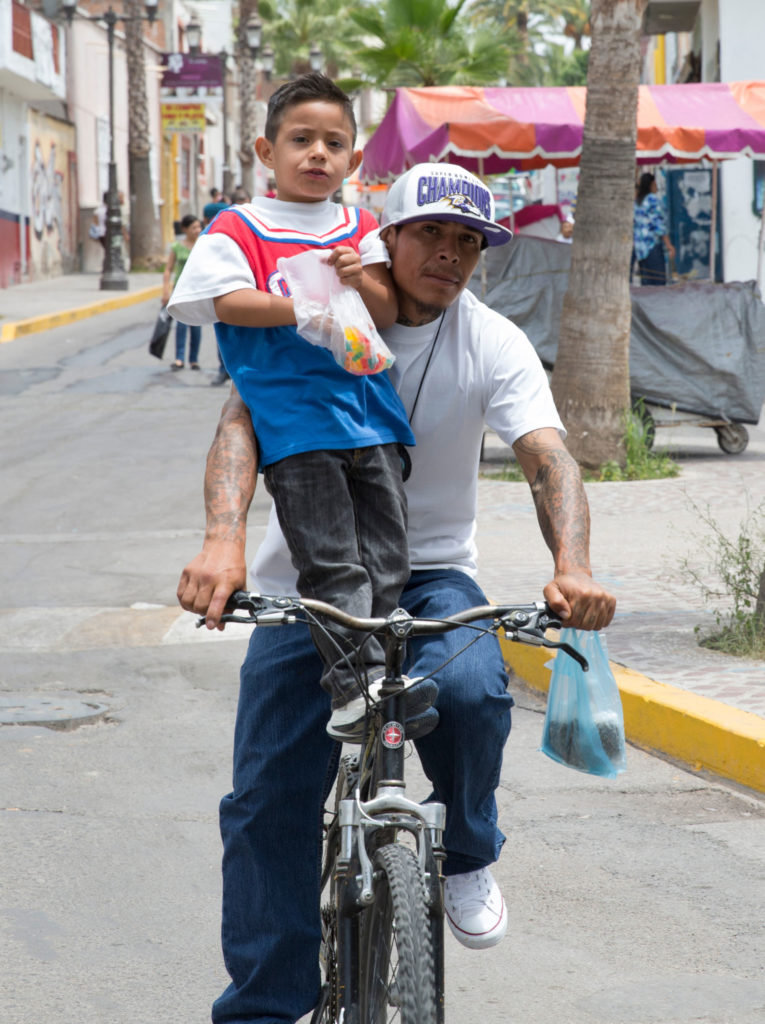
Recently, Macías’s personal and commissioned projects have started to converge. His latest editorial for i-D, Mexicano Americano, uses both Mexican and Mexican American models to illustrate the ties that bind homeland and diaspora. Shot in New York, Los Angeles, and Mexico City, it’s styled with oversized jackets, baggy pants, and other items by designer Willy Chavarria that nod to the sartorial innovations of working-class Chicanos in the US. “Dorian makes us feel beautiful,” Esparza, who modeled for the shoot, wrote in a heartfelt statement on Instagram. “He sees us often times before we even see ourselves. He treats us with integrity, respect and adoration. He values us. He makes us feel worthy of the space in photography that has historically prioritized white bodies.”
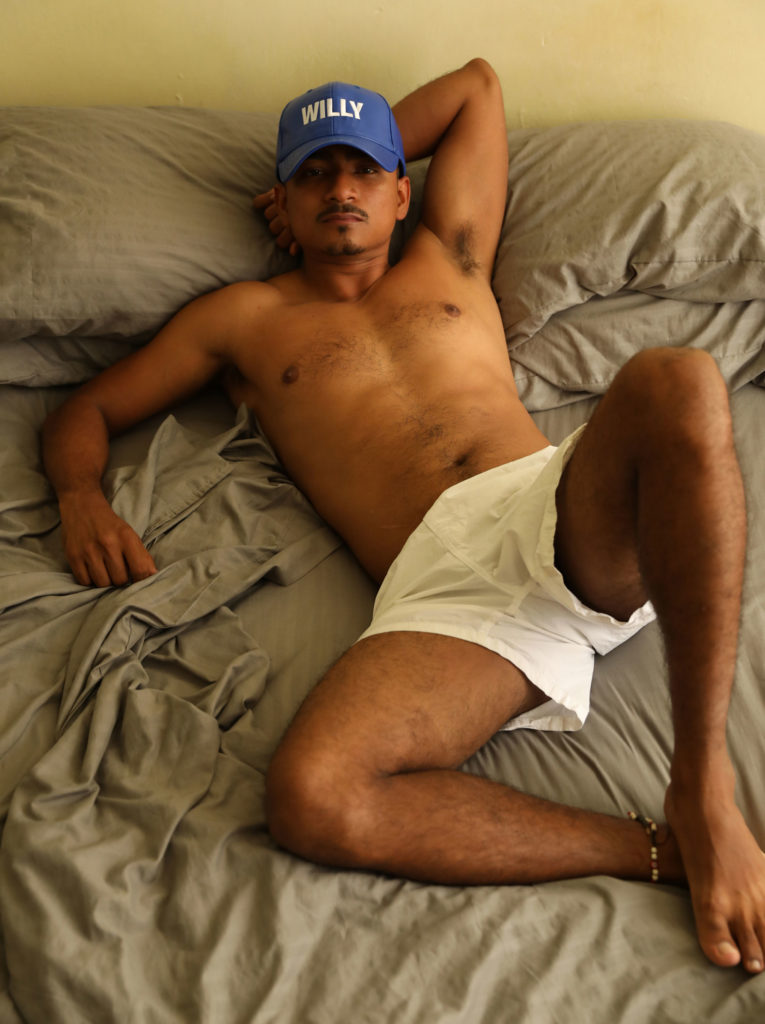
All photographs courtesy the artist
As satisfying as a project like this is for Macías, nothing feels as good as flying solo—stepping out the door and chasing his intuition through the city. “At the end of a day,” he tells me, “I love fashion because it’s something I do with my friends. I always enjoy it, even if it’s for a commercial campaign. But there’s never a moment I enjoy as much as when I step off set to take a portrait of a subject I spotted from a distance.”










